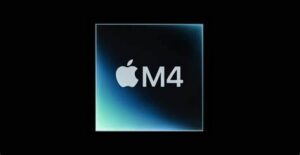Consumer segment remains as elusive as ever.
- The travails of Avegant suggest that solving the field of view issue in AR will not be enough to kick-start demand in the consumer market, raising big question marks about Magic Leap’s first product which is due to ship this year.
- To date, AR has remained very much an enterprise product because as long as the device improves productivity, the user experience and clunky hardware are less important.
- In the consumer market, the user pays for the experience meaning that if it is poor, he simply will not buy the product.
- Hence, I continue to believe that the following issues need to be solved before the consumer segment even has a chance:
- First: a head unit that is no more intrusive to wear than a regular pair of spectacles (also applies to VR).
- Second: a full field view of the virtual world as it is superimposed upon the real world.
- This is proving to be so difficult that all the solutions available today are letterboxed (limited field of view) with no real time-line as for when this problem will be solved.
- This is where Avegant appears to have made progress, although its head unit is huge, bulky and attached to a PC with a cable.
- Third: there will need to a vibrant ecosystem of developers to ensure that the experience offered is both broad and deep.
- Developers will also be needed to ensure that the experience is easy to use and fun and to push the boundaries of what the device can be used for.
- Even making progress on providing a full frame, immersive experience does not appear have been enough as Avegant has recently replaced its CEO and cut its workforce in half.
- Avegant’s plan in AR is to offer its technology to others to make the product but there appears to have been very little interest in licensing its IP.
- I suspect that this is because there remains no use case for consumer AR meaning that it will be very difficult to sell the product even with big progress having been made on the three problems above.
- I suspect that use cases will begin to emerge as the hardware begins to reach a point where it can be discretely worn, but until then it is hard to see how AR will make it past the enterprise.
- This is why almost all AR companies have long since pivoted towards the enterprise and those that have not are either downsizing (Avegant) or are the subject of intense scepticism (Magic Leap).
- Magic Leap has a developer device launching this year but in this environment, I struggle to see how developer writing apps for the Magic Leap One can hope to make a return on its investment.
- Consequently, I expect that a lot of the demand for this product will be from competitors eager to take it to pieces to find out what Google and others have spent billions of dollars on.
- For everyone else, it remains enterprise or bust.









Blog Comments
Magic Leap's Developer Video Reveals The Chasm Between Promise And Reality. – Forbes – Darwin Wealth Creation
July 12, 2018 at 12:06 pm
[…] the technical limitations that still plague AR (see here), the experience remains uncompelling explaining everyone but Magic Leap’s pivot to the […]
Magic Leap's Developer Video Reveals The Chasm Between Promise And Reality. | Super News Update
July 12, 2018 at 12:16 pm
[…] the technical limitations that still plague AR (see here), the experience remains uncompelling explaining everyone but Magic Leap’s pivot to the […]